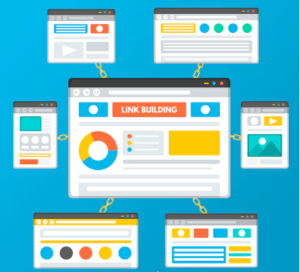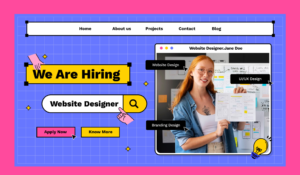In today’s digital age, a well-designed website is essential for establishing a strong online presence and engaging with your target audience. However, websites need to evolve and adapt to changing trends and user expectations. If you’re wondering whether it’s time to redesign your website, this blog will explore key indicators that can help you make an informed decision.
1. Outdated Design and User Experience
One of the most apparent signs that your website needs a redesign is if its design looks outdated. An aesthetically pleasing and modern website design helps create a positive impression and instills trust in visitors. Additionally, if users find it difficult to navigate your site or encounter usability issues, it may be time for a redesign. Evaluate user feedback, track user behavior through analytics, and identify pain points that need improvement.
2. Poor Mobile Responsiveness
With the increasing use of smartphones and tablets, having a mobile-responsive website is crucial. If your current website is not optimized for mobile devices and offers a subpar experience on smaller screens, it’s time to consider a redesign. Mobile responsiveness ensures that your site is accessible and user-friendly across different devices, improving engagement and reducing bounce rates.
3. Slow Page Load Speed
In today’s fast-paced digital world, users have little patience for slow-loading websites. If your site takes too long to load, visitors are more likely to abandon it and seek alternatives. Slow page load speed can negatively impact user experience, search engine rankings, and overall conversion rates. A website redesign can address underlying issues, optimize page load speed, and create a smooth and speedy browsing experience.
4. Evolving Brand Identity
As your business grows and evolves, your brand identity may change. If your current website no longer reflects your brand’s values, messaging, or visual identity, it’s a clear sign that a redesign is necessary. Your website should accurately represent your brand and provide a cohesive experience that aligns with your current positioning and target audience.
5. Changing User Needs and Expectations
User preferences and expectations evolve over time. If your website fails to meet the changing needs of your target audience, it may lead to a decline in engagement and conversions. Stay updated with the latest web design trends, conduct user surveys or interviews, and analyze user behavior to identify areas where your website falls short. A redesign can help address these gaps and create a more user-centric experience.
6. Integration of New Features and Technologies
Advancements in technology and the availability of new features can enhance your website’s functionality and user experience. If you find that your current website lacks crucial features or falls behind in utilizing the latest technologies, it may be time for a redesign. Consider incorporating features such as chatbots, social media integrations, personalization, or enhanced security measures to stay ahead of the curve and provide a seamless online experience.
Conclusion
A website redesign is not just about aesthetics; it’s about staying relevant, meeting user expectations, and achieving your business goals. By evaluating indicators such as outdated design, poor user experience, mobile responsiveness, evolving brand identity, changing user needs, and integration of new features, you can determine whether it’s time to embark on a website redesign journey. Remember, a well-executed redesign can revitalize your online presence, improve user engagement, and drive business growth in the digital landscape. And if you’re looking to start your website redesigned, check out our website design service or leave us a message at [email protected] or +971507058207.






